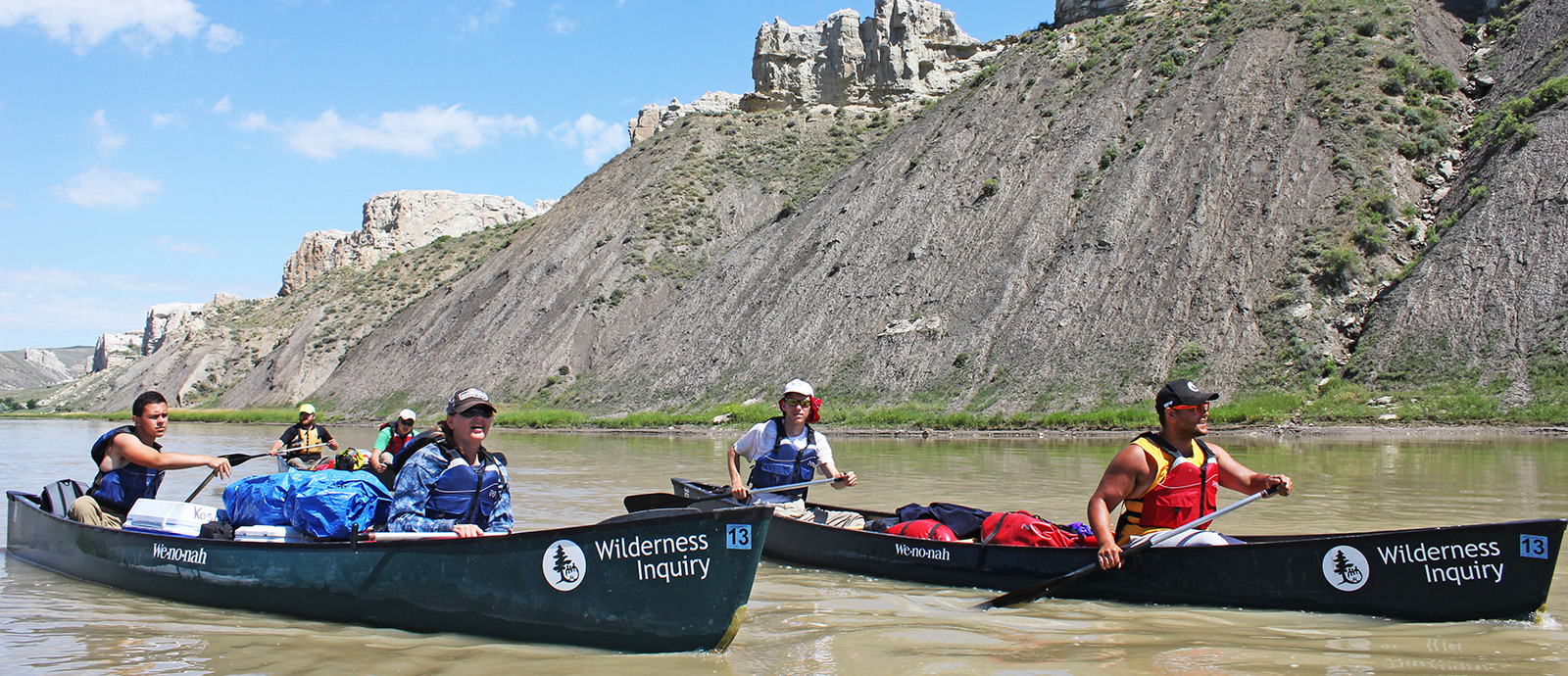Overview
View by Itinerary
View by Date
There are no events currently scheduled. Please check back soon.
About the Area
Visitors to Montana’s Missouri River will step back in time two hundred years to the time of Lewis and Clark, and experience both the Big Sky country of Montana and the historic Mighty Missouri just as these famous explorers did more than two centuries before.The Missouri River runs through the 377,000-acre URL{Upper Missouri Breaks National Monument;http://www.blm.gov/mt/st/en/fo/umrbnm.html}, created by President Clinton in January of 2001 and managed by the Bureau of Land Management (BLM). The 149-mile Upper Missouri National Wild and Scenic River, designated in 1976, flows through the monument.
In the Missouri Breaks of central Montana, modern visitors can view a landscape that has remained unchanged for centuries. These rugged badlands, scenic White Cliffs, and high rolling prairies attracted the Blackfoot Native Americans, Lewis and Clark, and a few hearty settlers, all of whom turned out to be mere visitors. The region has been described in many ways: “scenes of visionary enchantment” by Lewis and Clark, Karl Bodmer described a formation as “it was like an old Gothic Chapel with a chimney and pines…growing around the wall,” and William Clark also wrote of the country as harsh and desolate. Stephen Ambrose’s acclaimed book, Undaunted Courage, and Ken Burns’ documentary have also generated interest and attracted people from throughout the world.
With a vision of the United States spreading from ocean to ocean, President Thomas Jefferson conceived of an expedition to explore the vast expanse of the Louisiana Territory and the Pacific Northwest. Jefferson gave the expedition its primary objectives to find a transportation route through the Louisiana Territory to the Columbia River and in doing so to learn about native cultures and the resources of the region. President Jefferson chose his personal secretary and friend, URL{Meriwether Lewis;http://www.pbs.org/weta/thewest/people/i_r/lewis.htm}, to head the expedition. With the acquisition of the Louisiana Territory, Meriwether Lewis and William Clark embarked upon an epic adventure of discovery, which included traversing this very same stretch of Montana’s Missouri River. Their epic adventure stands the test of time and will continue to amaze and inspire people for generations.
The picturesque White Cliffs and numerous igneous intrusions have been slowly exposed by the meandering Missouri River. Since carving its way through millions of years of rock, the Missouri has helped geologists unravel the geological mysteries of this land. Exposed layers of shale and sandstone indicate the presence of a great inland sea: various angles of this layering represent folding, faulting, or uplifting and the many caves, pillars, and arches are results of differential erosion. Geologists theorize that the Missouri River once meandered its way to the Atlantic Ocean, but a great glacial mass that formed over what is now Canada altered its course to the south and east near Coal Banks Landing. The combination of these geologic events formed the impressive, yet harsh, region that Lewis and Clark would experience with their “URL{Corps of Discovery;http://en.wikipedia.org/wiki/Corps_of_Discovery}.”
The wild inhabitants of the land have remained much the same since early exploration. Ungulates, including bighorn sheep, mule deer, antelope, and elk, still roam this land and browse on the vegetation. Bald and golden eagles, prairie falcons, and sparrow hawks perch on the cliffs or soar overhead. The fertile bottomlands and riparian zones also support diverse wildlife such as sharp-tailed grouse and prairie dogs.
While traveling the river with Wilderness Inquiry paddlers will camp at sites used by Lewis and Clark, read from their expedition journals, and view the same landscape that awed these legendary explorers. Our groups discuss local history and current issues pertaining to land rights and endangered species. The URL{Missouri Breaks;http://en.wikipedia.org/wiki/Upper_Missouri_River_Breaks_National_Monument} provides visitors with a true American adventure and a taste of early 19th century exploration.
Read more »
